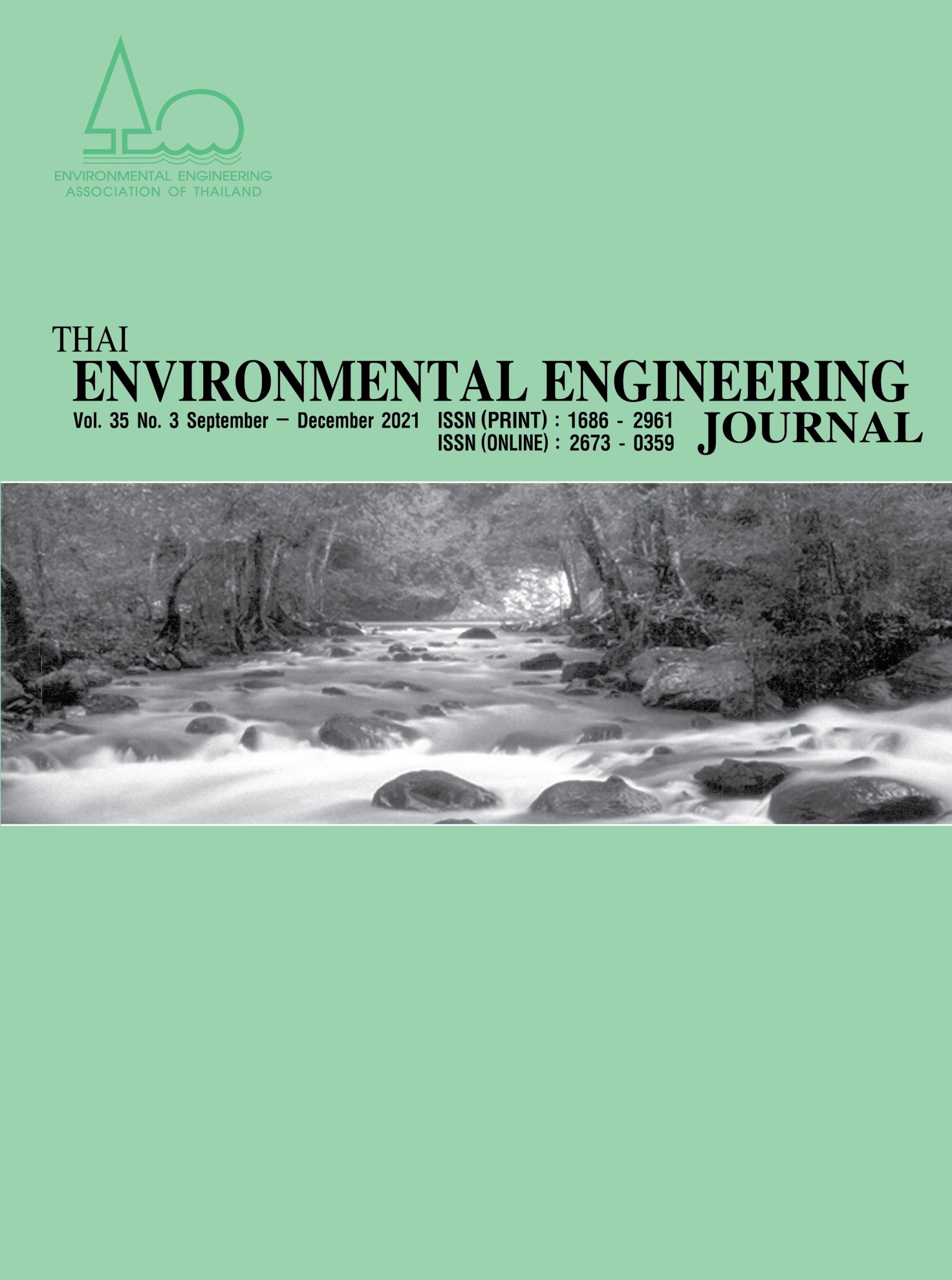Framework for the Development of Thai Normalisation Factors for Life Cycle Assessment in Thailand
Main Article Content
Abstract
Life cycle assessment (LCA) has become a widely recognized method for evaluating the environmental performance of a product or system along its supply chain. Nowadays, site-dependent Life Cycle Impact Assessment (LCIA) methods have been developed and LCA results could therefore potentially reflect the local, national, and/or regional environmental conditions. In Thailand, site-dependent normalisation factors (NFs) which could support the local decision context have not been developed yet. The objectives of this study are to review underlying methodologies of the NFs in existing LCIA methods; and to establish a framework for the development of Thai NFs. Depending upon the spatial scales, four LCIA methods (ReCiPe 2016, EF 3.0, CML-IA baseline, and TRACI 2.1) were selected to be reviewed and considered when designing a framework. The theoretical approach for the NFs of the four selected LCIA methods is similar but the considered impact categories are different depending upon the spatial distribution and targeted environmental impacts. NFs from each LCIA method apply different reference inventory and year depending upon its spatial scale and data availability, and apply different approaches for data source selection. The selection of an appropriate reference system and representative year for the inventory, and data gap filling are essential criteria to develop NFs for life cycle assessment in Thailand. After the reference inventory is developed for the NFs of desired spatial scale (regional or national), the robustness of the inventory should be evaluated to reflect the actual impacts from each category. The developed framework could provide the required information for the future development of NFs and satisfy the required gap specific for Thailand. Besides, this framework is potentially applicable for other regions.
Article Details
References
International Organization for Standardization (ISO) 14044. 2006. Environmental Management - Life Cycle Assessment - Requirements and guidelines. International Organization for Standardization (ISO), Geneva, Switzerland.
Gheewala, S.H. and Mungcharoen, T. 2017. Perspectives on Life Cycle Assessment Application and Research in Thailand. Indonesian Journal of Life Cycle Assessment and Sustainability, 1: 8-12.
Sleeswijk, A.W., Oers, L.F.C.M.V., Guinée, J.B., Struijs, J. and Huijbregts, M.A.J. 2008. Normalisation in product life cycle assessment: An LCA of the global and European economic systems in the year 2000. Science of The Total Environment, 390(1): 227-240.
Sala, S., Benini, L., Mancini, L. and Pant, R. 2015. Integrated assessment of environmental impact of Europe in 2010: data sources and extrapolation strategies for calculating normalisation factors. The International Journal of Life Cycle Assessment 20.
National Institute for Public Health and the Environment, Ministry of Health, Welfare and Sport. 2020. Normalization scores ReCiPe 2016. [Accessed August, 10 2021] Available from: https://www.rivm.nl/en/documenten/normalization-scores-recipe-2016.
Sala, S., Crenna, E., Secchi, M. and Pant, R. 2017. Global normalisation factors for the Environmental Footprint and Life Cycle Assessment. EUR 28984 EN. Publications Office of the European Union, Luxembourg.
Bare, J., Gloria, T. and Norris, G. 2006. Development of the Method and U.S. Normalization Database for Life Cycle Impact Assessment and Sustainability Metrics. Environmental Science & Technology. 40(16): 5108-5115.
Sala, S., Benini, L., Mancini, L., Ponsioen, T., Laurent, A., Zelm, R. and Pant, R. 2014. Methodology for building LCA-compliant national inventories of emissions and resource extraction. EUR 26871. Publications Office of the European Union, Luxembourg.
Heijungs, R., Guinée, J., Kleijn, R. and Rovers, V. 2007. Bias in normalization: Causes, consequences, detection and remedies. The International Journal of Life Cycle Assessment, 12, 211-216.
Benini, L., Mancini, L., Sala, S., Manfredi, S., Schau, E. and Pant, R. 2014. Normalisation method and data for Environmental Footprints. EUR 26842. Publications Office of the European Union, Luxembourg. JRC91531.
Cucurachi, S., Heijungs, R., Laurent, A. and Sala, S. 2013. Normalization factors for human toxicity and eco toxicity. Deliverable D2.4. LC‐IMPACT Project. Development and application of environmental Life Cycle Impact Assessment Methods for improved sustainability Characterisation of Technologies. Proj. No. 243827 FP7‐ENV‐2009‐1.
Benini, L. and Sala, S. 2016. Uncertainty and sensitivity analysis of normalization factors to methodological assumptions. The International Journal of Life Cycle Assessment, 21(2): 224-236.
Laurent, A., Hauschild, M., Golsteijn, L., Fontes, M., Simas, J. and Wood, R. 2013. Deliverable 5.2: Normalisation Factors for Environmental, Economic and Socio-economic Indicators. Prosuite Deliverable 5.2: Normalisation factors for Environmental, Economic and Socio-economic Indicators.
Guinée, J.B, Gorrée, M., Heijungs, R., Huppes, G., Kleijn, R., Koning, A.D, Oers, L.V, Sleeswijk, A.N., Suh, S., Helias, A., Bruijn, H.D., Duin, R.V. and Huijbregts, M.A.J. 2001. Handbook on life cycle assessment. Operational guide to the ISO standards. Dordrecht: Kluwer Academic Publishers; 2002. 704 pp.
Crenna, E., Secchi, M., Benini, L. and Sala, S. 2019. Global environmental impacts: data sources and methodological choices for calculating normalization factors for LCA. The International Journal of Life Cycle Assessment, 24(10): 1851-1877.
Pizzol, M., Laurent, A., Sala, S., Weidema, B., Verones, F., and Koffler, C. 2017. Normalisation and weighting in life cycle assessment: quo vadis? The International Journal of Life Cycle Assessment, 22(6): 853-866.


